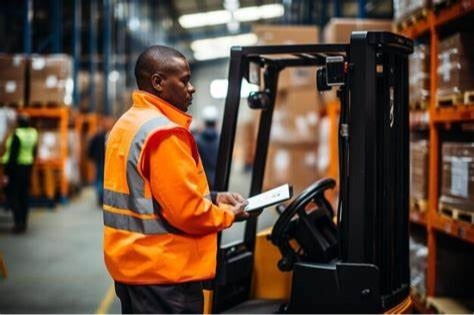Forklift Buyers - The Hidden Mistakes That Cost You Big
By Kyle Firkins - April 17, 2025

Buying a Forklift? The majority of buyers overlook vital steps which results in them spending too much money or choosing incorrect forklift equipment.
The purchase of a forklift represents a choice that can boost your productivity while simultaneously posing the risk of becoming a costly mistake. The same buying error occurs among most purchasers whether they buy their first forklift or add more to their collection.
Buyers typically skip essential processes when making purchasing decisions.
The result? Organizations experience financial setbacks from paying excessive amounts for equipment and choosing unsuitable forklifts that fail to meet their operational requirements.
The free Forklift Buyer’s Checklist functions as your guide to avoid typical errors by presenting clear step-by-step instructions.
Avoid common, costly mistakes
Learn which inspections and questions warrant your attention during the process
Secure the best deal when selecting appropriate equipment.
Why Forklift Buying Mistakes Are So Common
Forklift procurement appears easy but becomes daunting with the numerous available options and specifications to choose from. The selection process for forklifts remains complicated for experienced buyers because it involves choosing between various lift capacities and combinations of tire types and power sources.
Here’s what often goes wrong:
You make a bad investment when you purchase a forklift that does not fulfill your operational needs.
Overpaying for features you’ll never use
Buying equipment with hidden mechanical issues
Business owners frequently overlook essential expenses related to maintenance and replacement parts for the long-term.
Making purchasing decisions based solely on salesperson recommendations without personal research exposes buyers to significant risk.
A forklift is a serious investment. Bad choices when buying forklifts result in lower productivity rates and frequent operational halts alongside higher ownership costs.
The Smarter Way to Buy a Forklift
Purchasers who possess knowledge use an organized method to make their purchasing decisions. The checklist guides you through essential decision points by identifying evaluation factors and inspection procedures while explaining how to evaluate available options.
Here’s a glimpse at what you’ll learn:
1. Understand Your Operational Needs
Before comparing models and prices make sure you grasp the fundamental information.
Load weight and dimensions
Required lift height
Aisle width and turning radius
Indoor versus outdoor use
Frequency and intensity of use
When you choose the appropriate forklift for your workplace conditions you prevent future dissatisfaction.
2. Choose the Right Power Source
Your operation needs to choose between an electric forklift or a model that uses internal combustion to function.
Electric forklifts operate silently and maintain cleanliness which makes them suitable for indoor use.
Internal combustion forklifts fueled by diesel, gas or propane produce exceptional power and longevity which renders them the perfect choice for demanding outdoor applications.
Users can assess both pros and cons through the checklist to meet their particular requirements.
3. Inspect the Equipment Like a Pro
Assessing the right elements is essential when buying both new and pre-owned forklifts. The checklist identifies important inspection points such as:
Mast, forks, and hydraulic systems
Evaluate electric units by reviewing their battery status together with their charge history.
Engine, tires, and frame (for IC models)
Maintenance records and repair history
You can recognize warning signs without a mechanic's knowledge by following the checklist.
4. Look Beyond the Price Tag
Though initial price captures buyers' attention, intelligent purchasers consider the complete ownership expenses. That includes:
Maintenance and parts availability
Warranty coverage
Expected fuel or energy costs
Resale value and longevity
The true value of a forklift depends on its reliable operation and efficiency across its entire lifespan rather than its purchase price.
Why a Checklist Matters
Operating a company at high speed results in overlooked small details that can grow into major problems. That’s where a structured checklist comes in.
This isn’t just a shopping list. It’s a guide designed to:
Help you stay organized
Ask the right questions
Compare models effectively
Confidently negotiate the best deal
Experienced buyers who use checklists protect themselves against potential risks and verify that all necessary components are addressed.
Make Your Next Forklift Purchase with Confidence
Appropriate tools enable you to make wise forklift choices without requiring expert knowledge.
The Forklift Buyer’s Checklist helps buyers stay focused and avoid mistakes to secure the best equipment for their business operations.
Go Back